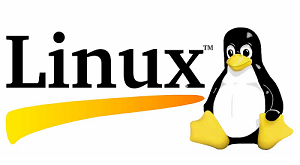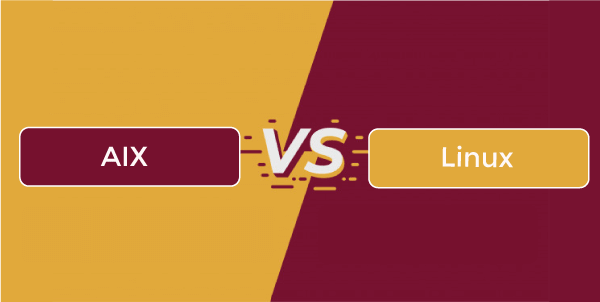Difference between AIX and Linux Operating System
In this article, you will learn about the difference between the AIX and Linux Operating Systems. But before discussing the differences, you must know about the AIX and Linux Operating Systems.
What is the AIX operating system?

AIX stands for Advanced Interactive eXecutive. It is an IBM open OS that is based on a UNIX version. The AIX/ESA operating system was created for IBM’s System/390 or large server hardware architecture. AIX/6000 is an OS that is based on IBM’s RISC System/6000 architecture. The AIX OS family first went live in the year 1986, and by the year 1990, it had established itself as the standard OS for the RS/6000 series of computer systems. AIX is still being developed by IBM and is supported by IBM I and Linux on IBM Power Systems. The AIX operating system is intended to provide exceptional scalability, dependability, and manageability. AIX 7.2 is the latest version of the AIX OS.
Features of AIX Operating System
There are various features of the AIX operating system. Some of the features of AIX OS are as follows:
- It supports all Oracle versions completely.
- The IBM AIX OS is a new version that allows users to deploy new patches without restarting the system.
- It is a very dependable, stable, and versatile operating system.
- It gives better performance.
What is Linux Operating System?

The Linux OS is one of the best versions of the UNIX OS that is based on the Linux Kernel. In 1991, it was designed and developed by the Linus Torvalds. It is a free and open-source OS licensed under the GNU (General Public License). It has been the fastest-growing OS among industries over the years because of its strong modularity, low reliance, and extensive distributions. The Linux terminology contains a bootloader, a system library, an init-program, a kernel, and a system utility. It is also known for its open-source and flexible support.
It was first designed and developed for personal computers. It has now been integrated into a variety of platforms, including mainframe computers, servers, and supercomputers. It is mainly utilized in embedded devices, including TVs, game consoles, DVRs, routers, smartwatches, etc. Android is the most popular Linux application, which runs on smart devices and tablets and is built on the Linux kernel. Because of Android, Linux has the greatest installed base of any general-purpose OS. It’s usually included with a Linux distribution.
Features of the Linux Operating System
There are various features of the Linux operating system. Some features of the Linux operating system are as follows:
- Portable
Linux software runs smoothly on a wide range of hardware platforms. It runs smoothly on both high-end and low-end hardware. The Linux operating system may be installed on any system without any issue of incompatibility. - Graphical User Interface
The Linux OS has GUI capabilities. Users may also download the apps, and the computer graphics will begin to function similarly to Windows. - Free and Open-Source
Its source code can be used and modified by anyone. Many developers work in organizations to improve and strengthen Linux, and many more are constantly updating the system. - Lightweight
Linux is a very light operating system. Linux has fewer requirements than any other operating system, a smaller memory footprint, and requires less disk space. A Linux Distro will generally contain 128MB of RAM and the same amount of disk space. - Frequent New Updates
In Linux, users control the software updates. Users may choose which system updates are needed, and there are a variety of options available. These improvements happen much faster than they do on other operating systems. As a result, system upgrades are straightforward. - Shell
The Linux OS includes crucial programs that users may use to issue commands to the OS for properly executing the design. You may also instruct it to run different Linux commands to run the programs effectively. - Security
Linux supports user security with authentication features such as password protection, restricted access to certain files, and data encryption.
Key differences between the AIX and Linux Operating System

Here, you will learn the key differences between AIX and Linux operating systems. Some of the key differences between AIX and Linux operating systems are as follows:
- IBM AIX is an open OS that is based on a UNIX OS version. On the other hand, the Linux OS is one of the UNIX OS versions that are based on the Linux Kernel.
- The AIX operating system was designed and developed by IBM and launched in 1986. On the other hand, the Linux operating system was designed and developed by the Linus Torvalds and launched in 1991.
- AIX operating system is mainly used in the Server, NAS, and workstation. In contrast, the Linux OS is mainly designed for embedded systems, servers, mainframe computers, mobile devices, PCs, and supercomputers.
- IBM AIX OS kernel type is Monolithic with modules. On the other hand, Linux operating system kernel type is Monolithic.
- AIX operating system has no default GUI. On the other hand, Linux operating system has a default GUI.
- IBM AIX operating system native APIs are SysV/POSIX. On the other hand, Linux operating system native APIs are Linux/POSIX.
- AIX operating system supports the POWER, PowerPC-AS, PowerPC, and Power ISA architectures. On the other hand, Linux operating system supports the IA-32, x86-64, ARM, PowerPC, and SPARC architectures.
- AIX operating system update management is Service Update Management Assistant (SUMA). On the other hand, Linux operating system update management mainly depends on the distribution.
- AIX OS subsystems do not support non-native APIs. In contrast, the non-native APIs supported by Linux OS subsystems are Win16, Mono, Java, and Win32.
Head-to-head Comparison between the AIX and Linux Operating System
Here, you will learn the head-to-head comparison between the AIX and Linux Operating Systems. Some of the head-to-head comparisons between AIX and Linux Operating System are as follows:
| AIX Operating System | Linux Operating System |
|---|---|
| It is an open OS that is based on a UNIX version. | It is one of the UNIX OS versions based on the Linux Kernel. |
| It was designed and developed by IBM and launched in 1986. | It was designed and developed by the Linus Torvalds and launched in 1991. |
| It has no default graphical user interface. | It has a default graphical user interface. |
| Its update management is Service Update Management Assistant (SUMA). | Its update management mainly depends on the distribution. |
| It supports the PowerPC, POWER, PowerPC-AS, and Power ISA architectures. | It supports the IA-32, x86-64, ARM, PowerPC, and SPARC architectures. |
| It is commonly utilized in the Server, NAS, and workstation. | It is mainly designed for embedded systems, servers, mainframe systems, mobile devices, PCs, and supercomputers. |
| It has the preferred license Proprietary. | It has the preferred license of GNU GPLv2 (kernel). |
| AIX supports the following file systems: JFS, UDF, NFS, JFS2, ISO 9660, SMBFS, and GPFS. | Linux supports the following file systems: ext2, ReiserFS, FAT, ext3, ext4, btrfs, ISO 9660, UDF, and NFS. |
| Its native APIs are SysV and POSIX. | Its native APIs are Linux and POSIX. |
| Its kernel type is Monolithic with modules. | Its kernel type is Monolithic. |
| It doesn’t support non-native APIs. | The non-native APIs supported by its subsystems are Win16, Mono, Java, and Win32. |
